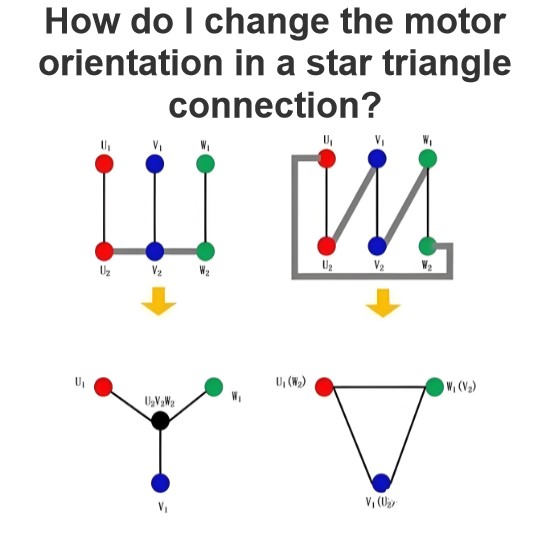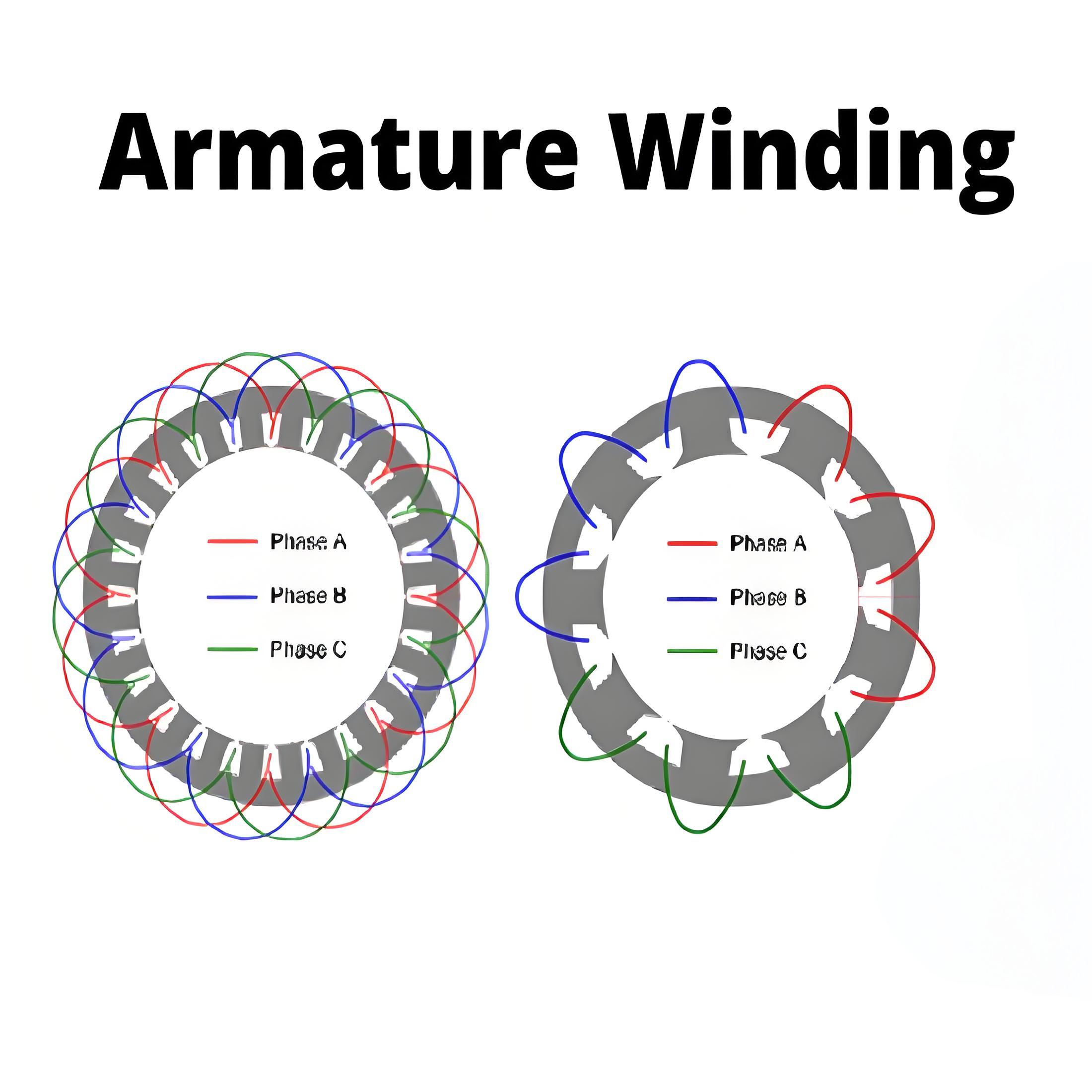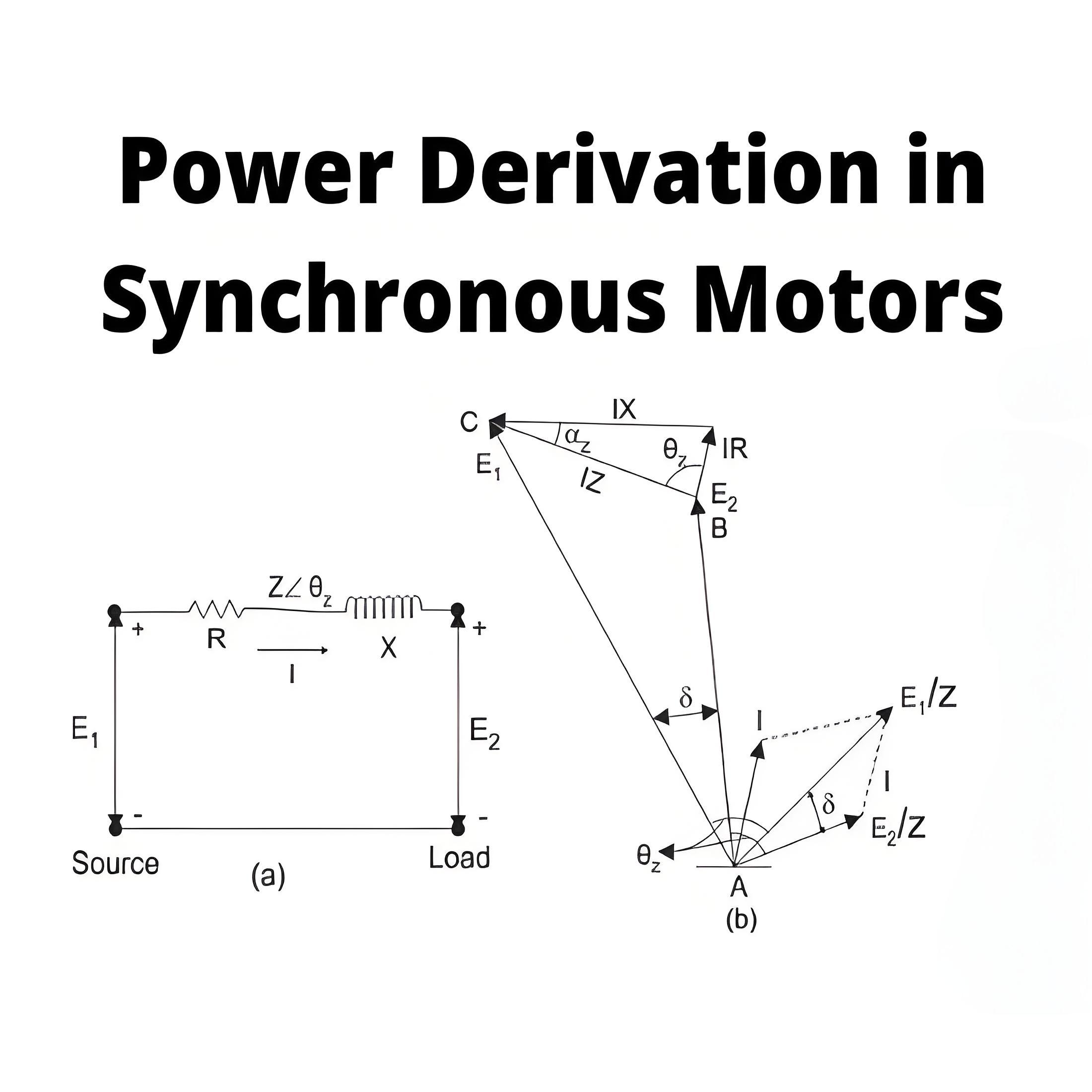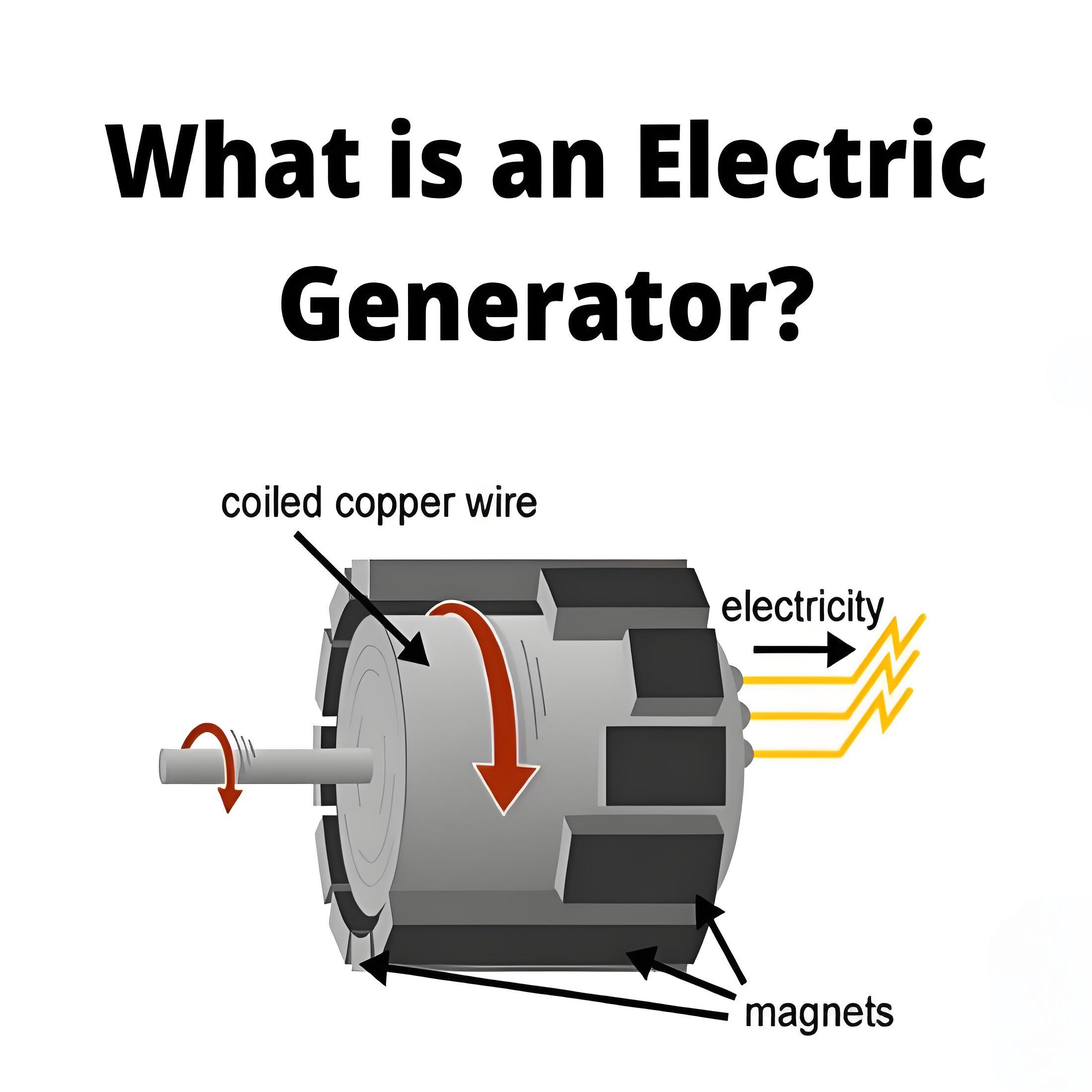What is a Four Point Starter ?
What is a Four Point Starter ?
4 Point Starter Definition
A 4 point starter protects the armature of DC shunt motor or compound wound DC motor from the high starting currents that occur when the motor starts.
The 4 point starter has a lot of constructional and functional similarity to a 3 point starter, but this special device has an additional point and coil in its construction (as the name suggests). This brings about some difference in its functionality, though the basic operational characteristic remains the same. The basic difference in the circuit of a 4 point starter as compared to 3 point starter is that the holding coil is removed from the shunt field current and is connected directly across the line with current limiting resistance in series.
Construction and Operation of Four Point Starter
A 4 point starter as the name suggests has 4 main operational points, namely
‘L’ Line terminal (Connected to positive of supply.)
‘A’ Armature terminal (Connected to the armature winding.)
‘F’ Field terminal. (Connected to the field winding.)
Like in the case of the 3 point starter, and in addition to it there is,
A 4th point N (Connected to the No Voltage Coil NVC)
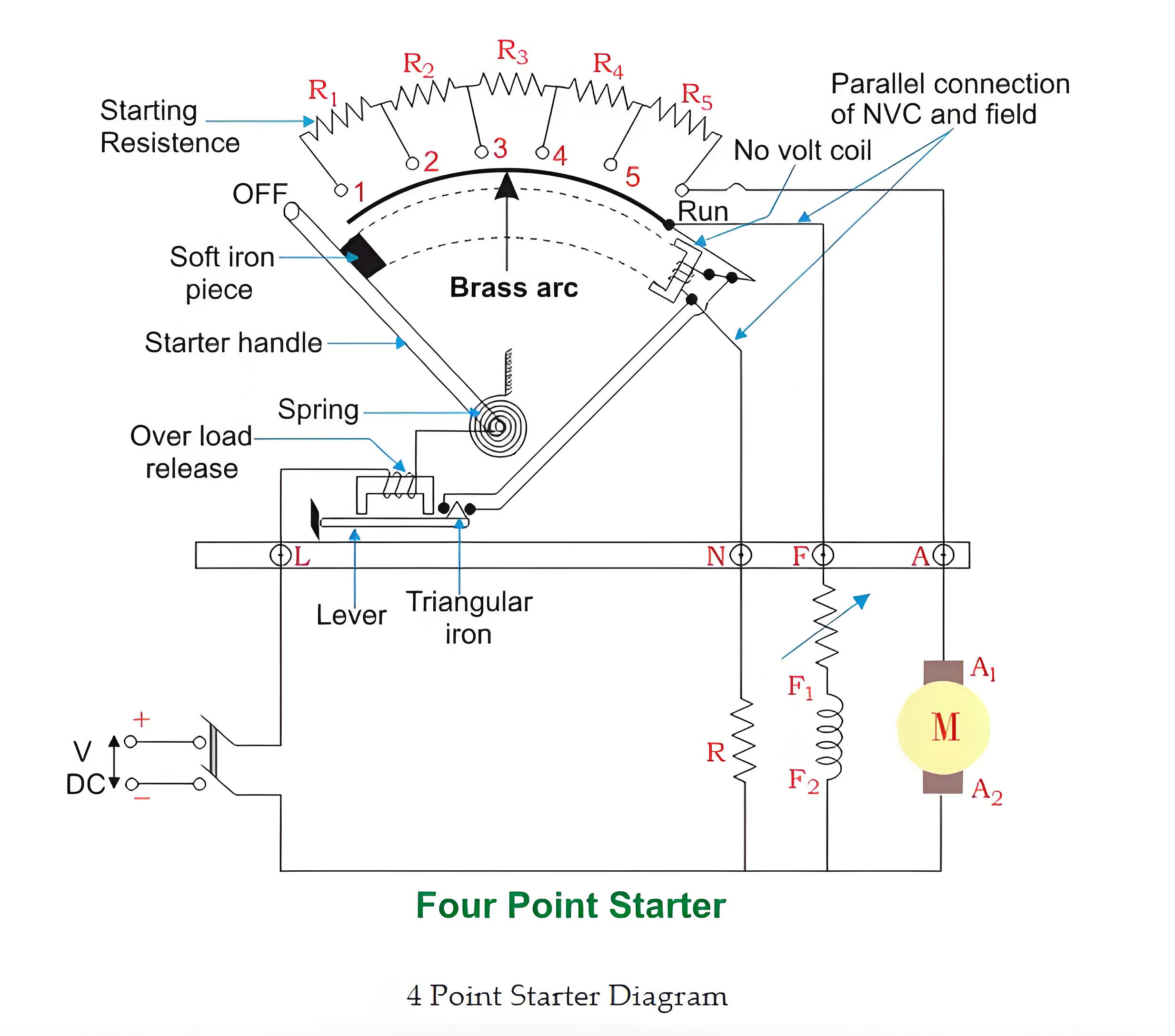
Diagram Components
The 4 point starter includes four main points: L (line terminal), A (armature terminal), F (field terminal), and N (no voltage coil).
Working Principle
The 4 point starter operates by independently connecting the no voltage coil across the supply, maintaining consistent performance.
No Voltage Coil
The NVC ensures the handle stays in the RUN position, using a fixed resistance to control the current.
Operational Difference
The key difference between a 4 point and 3 point starter is the independent connection of the NVC, ensuring stable operation regardless of field circuit changes.
The Electricity Encyclopedia is dedicated to accelerating the dissemination and application of electricity knowledge and adding impetus to the development and innovation of the electricity industry.
